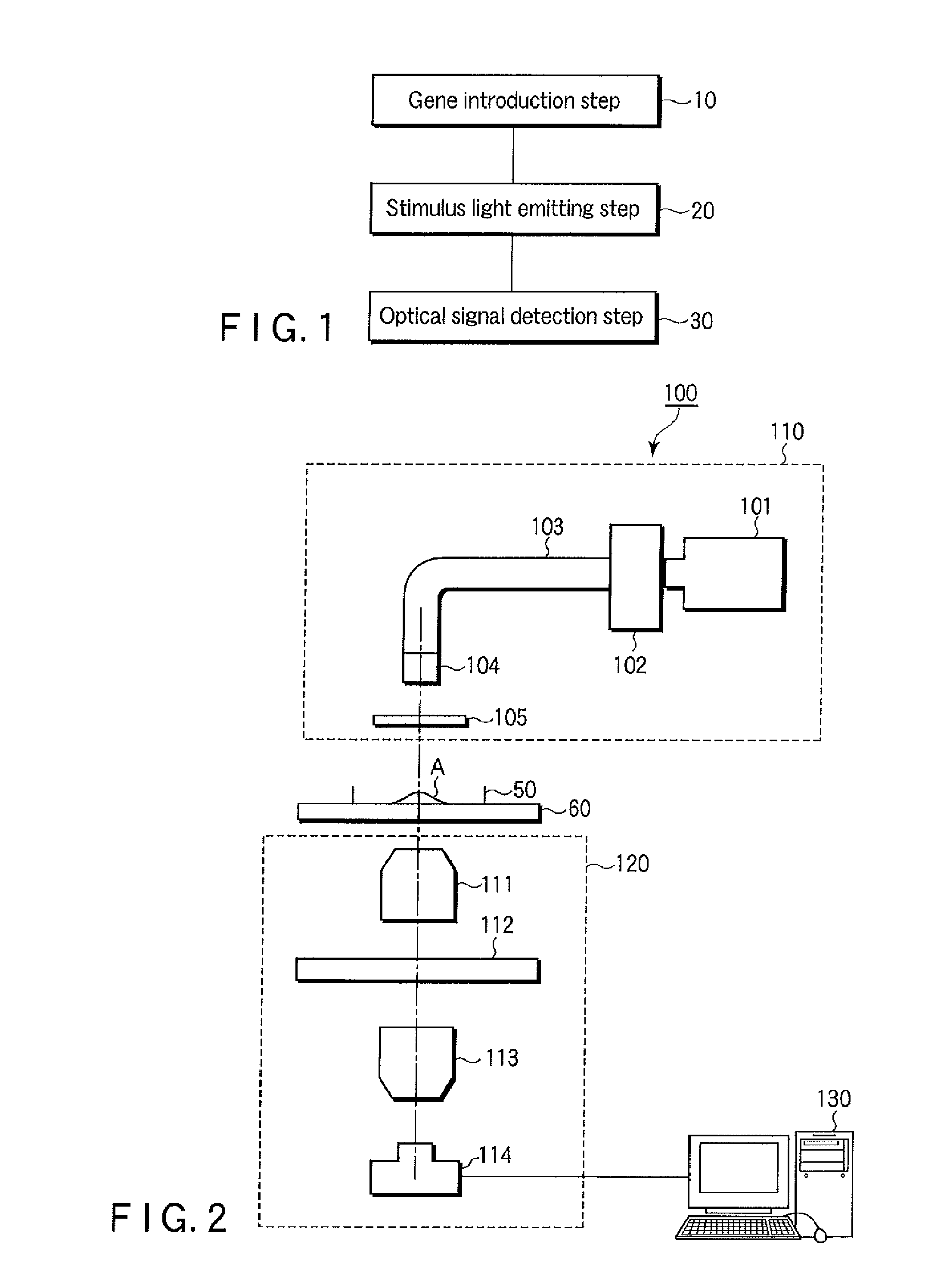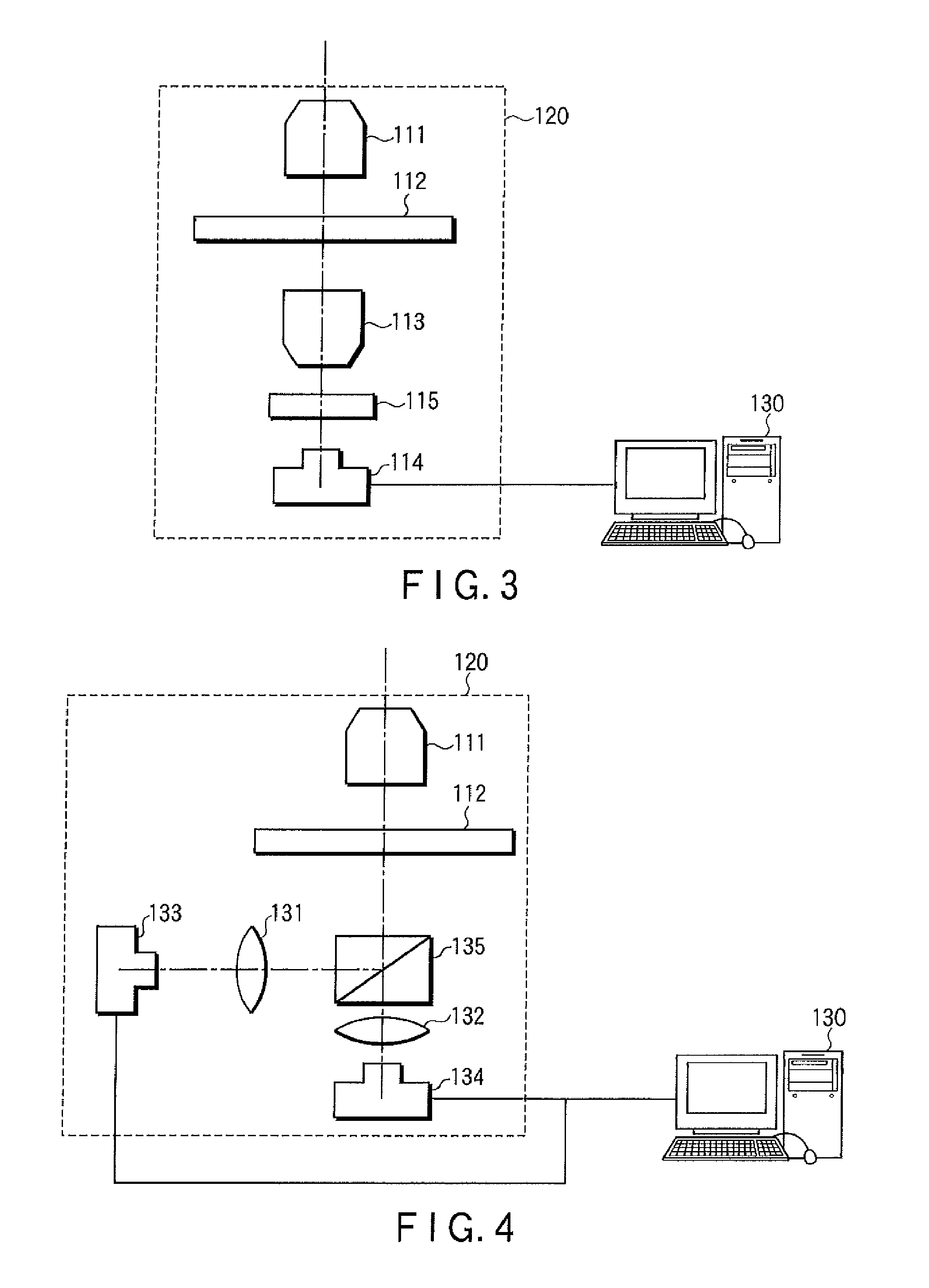Method and system for analyzing optical signal
a technology of optical signal and optical signal, applied in the field of optical signal analysis, can solve the problems of excessive photic stimulation of channel protein, inability to correct signal analysis, and extreme types of usable fluorescent probes, and achieve the effect of monitoring easily and correctly
- Summary
- Abstract
- Description
- Claims
- Application Information
AI Technical Summary
Benefits of technology
Problems solved by technology
Method used
Image
Examples
first embodiment
[0038]FIG. 1
[0039]FIG. 1 is a flow chart of a method of analyzing an optical signal in the first embodiment.
[0040]The first embodiment is, as an assumption, a method of analyzing an optical signal which analyzes a signal protein induced by a photosensitive protein (hereinafter, also called a target signal protein).
[0041]The photosensitive protein used in the first embodiment means various kinds of proteins activated by photic stimulation of a specific wavelength. Examples of the photosensitive protein include a photosensitive channel protein in which depolarization and hyperpolarization of a channel (that is, opening / closing of a channel) are caused by photic stimulation of a specific wavelength and include, but are not limited to, a photosensitive ion channel film protein derived from green algae such as channel rhodopsin-2 (ChR2) and halorhodopsin (NpHR).
[0042](1) Gene Introduction Step
[0043]First, a gene that expresses a luminescent probe to analyze a target signal protein is int...
second embodiment
[0057]As the second embodiment, two target signal proteins or more to be analyzed may be present.
[0058]When, for example, two target signal proteins (first and second signal proteins) are detected, a gene to express a first luminescent probe (first luminescent probe gene) to analyze the first signal protein and a gene to express a second luminescent probe (second luminescent probe gene) to analyze the second signal protein are introduced into an organism sample. The first and second luminescent probe genes code luminescent probes emitting lights of mutually different wavelengths, and light emitted by each luminescent probe is identified as a different optical signal so that the light can individually be imaged and quantified.
[0059]The first and second signal proteins are imaged by the first and second luminescent probes respectively and thus, expressions of each signal protein and each luminescent probe need to be mutually linked.
[0060]When, for example, calcium ions (first signal t...
PUM
| Property | Measurement | Unit |
|---|---|---|
| color temperature | aaaaa | aaaaa |
| color temperature | aaaaa | aaaaa |
| photosensitive | aaaaa | aaaaa |
Abstract
Description
Claims
Application Information
 Login to View More
Login to View More - R&D
- Intellectual Property
- Life Sciences
- Materials
- Tech Scout
- Unparalleled Data Quality
- Higher Quality Content
- 60% Fewer Hallucinations
Browse by: Latest US Patents, China's latest patents, Technical Efficacy Thesaurus, Application Domain, Technology Topic, Popular Technical Reports.
© 2025 PatSnap. All rights reserved.Legal|Privacy policy|Modern Slavery Act Transparency Statement|Sitemap|About US| Contact US: help@patsnap.com


